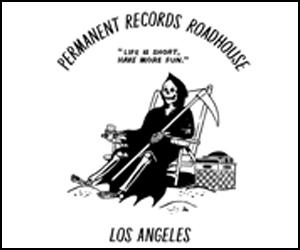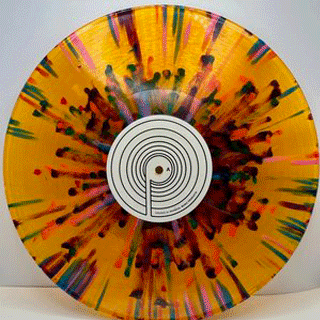Iconoclastic rockers Gang of Four still sound original, even if the lineup isn’t
Roy Jurgens on
0

There once was a band called Gang of Four. Birthed in the rainy industrial town of Leeds in 1977, they laid out the map on which a genre called “post-punk” would be explored. What the rapt crowd saw at the Roxy on Wednesday night was not that band. What the crowd saw instead was a furious young act led by an acerbic elderly uncle, still brimming with piss and vinegar, that went by the brand of “Gang of Four.”
Guitarist Andy Gill is the last man standing among the originals. It’s been over 10 years since he was last joined onstage by Hugo Burnham, Jon King, and Dave Allen (who went on to form the terrific Shriekback as well as King Swamp). While one has the itch to bash the current manifestation and spout words like “lacking integrity” and “money-grab,” this itch would be best left unscratched. Purists may desire that more than one original member be present, but Gill is not sullying the band’s legacy with this current incarnation.
As the Roxy’s stage curtains arose, Gill grabbed his Strat and promptly abused it, at first by merely clawing at it, then dropping it to the stage floor, picking it back up, hurling it across the stage and finishing it off by stepping on the pickups. Mind you, this wasn’t a stunt guitar, a pawn shop special that artists acquire for $50, solely for the purpose of an onstage tantrum. To the astonishment of many, Gill used the very same instrument for the rest of the show. Also puzzling, and pardon the guitar geekdom for a moment, Gill shuns post-punk tradition by not playing through effects pedals, opting to go straight into twin Peavey amps set to “white hot squall.” The rest of the band promptly joined in and they launched into a scorching version of “Love Like Anthrax.” The crowd of paunchy Brit expats (you know the type, supporters of mid-table Championship sides like Leeds United, Millwall, Sheffield Wednesday, with their dented skulls and barfight scars), the ever-present sullen goths, and the odd millennial on an archeological dig swayed back and forth to the hypnotic groove.
If you were looking to make a biopic on some iconoclastic ’80s Brit band, singer John “Gaoler” Sterry is the sort of lad you’d cast. Handsome, charismatic and icy, he did a terrific job of leading the fray and letting Gill just be Gill. Every bit as fetching (and in possession of a terrific “Sideshow Bob” hairstyle) while ripping the looping dub-funk- punk bass lines that so defined the GOF sound, was Tomas McNeice. He and drummer Tobias Humble formed a rolling thunderous cobblestone upon which Gill and Sterry danced. Gang of Four has the unnerving ability to be icy and mechanical while being funky and soulful. None of it makes any sense, which is what makes for such a wonderful strange brew. Gaoler does the older material rough justice, nailing songs like “To Hell with Poverty,” “At Home He’s a Tourist” and their lone pop hit “I Love a Man in Uniform.”
The band’s forthcoming release “Happy Now” (out March 29) picks up where they left off. The familiar polyrhythms and dub-inspired bass lines spiced with fractured guitar is still omnipresent. What differs now is that they’ve decided to go all in on the politics. To be frank, GOF were always political, but they weren’t flag-wavers for whatever outrage was current, more keenly observational than than confrontational. But Brexit and Trump changed all of that. Songs like “Ivanka: ‘My Name’s On It” and “Change the Locks” are pretty clear in their intent. (Stream “Paper Thin” and their 2018 “Complicit” EP here.)
It’s been 40 years since they released “Entertainment,” a vanguard record that unleashed the unholy concoction of brutal repetitive drum and bass sounds, matched with atonal bursts of guitar and socially observant lyrics being barked over the top. They’ve influenced a number of huge bands the generation after them. R.E.M., Nirvana, U2, Massive Attack, NIN and the Red Hot Chili Peppers all cite Gang of Four as having shaped their sound. In fact, one could argue that rap-metal, borne two generations later, was also influenced, as Tom Morello’s presence at the show would infer.
The Los Angeles stop was the third on an 18 date U.S. tour, finishing up in Brooklyn on Feb. 25.
Photos by Roy Jurgens




Leave a Reply